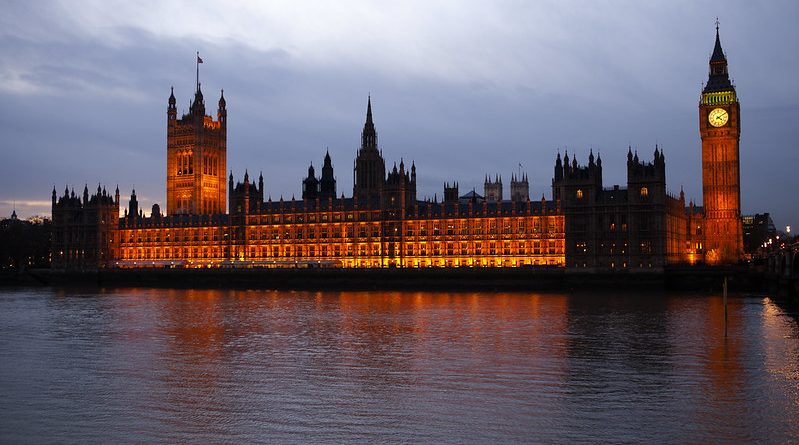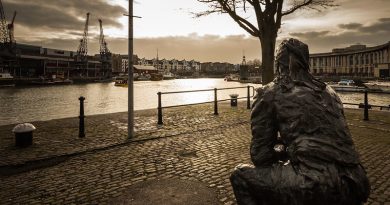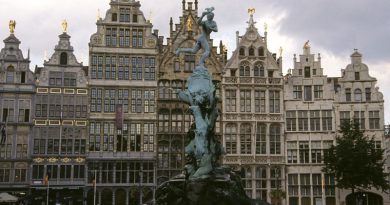The Abandoned Aussie
Written by Ian Cross, edited by Kaz Bosali
In January 2021, my mother died in Canberra. She had lived in the same house for almost 60 years but then spent the last few years in a nursing home suffering from dementia.
I have lived in London for 30 years and throughout that time, returned home two or three times a year to visit her. But as the Covid-19 pandemic unfolded at the same time as my mother entered palliative care, and then received an end of life diagnosis, I investigated in the second half of 2020 the prospect of returning one last time.
After my sister experienced the quarantine restrictions associated with a visit in those final weeks from just over the border in Melbourne, we as a family determined it was just too difficult and restricting to return. Grieving while isolating alone in paid quarantine, attending the funeral while practicing extreme social distancing, and the inability to meet friends and family and attend a wake afterwards, put paid to that and I participated in the funeral by video link, like so many Australians living abroad before or since.
The extreme measures enacted by the Australian authorities have been the subject of much debate inside and outside the country. Based on my personal experience I am definitely in the camp that believes the Australians have gone too far.
In the 18 months since the start of the pandemic I have travelled to numerous parts of the world and witnessed first hand the issues associated with travelling internationally in the Covid Zone. What has become clear to me is not only how different each place has responded to the crisis or how each has been affected by the pandemic, but also how this response has affected travellers.
On June 2021, in Athens, Greece, the tourist crowds were so sparse that when I visited the Parthenon, atop the Acropolis late in the day, there were only four other tourists there. At Delphi, the pantheon of the gods in Ancient Greece, I was the only tourist being watched over by a solitary security guard. At Olympia, the birthplace of the Olympic Games, there were more than 20 security personnel. But at 9 in the morning I was again the only visitor. Bored security guards had so little to do that I was cautioned several times not to stray from the well marked paths.
I was watched so closely l felt I had done something wrong by even being there. Normally such iconic sites are over run by coachloads of tourists.
This surreal, dystopic world of international travel has its advantages if you want to avoid crowds. But many tourists are put off not just by fear and uncertainty, or, for many older folk, the technological challenge of endless on line form filling, but by the costs of travelling in The Covid Zone.
The Greeks allowed international visitors who had been vaccinated to enter without further tests, but re-entering the UK required a total of four tests: the first within 72 hours before leaving Greece to show you were Covid negative. The second test was on Day 2 of a ten day quarantine back in the UK. A third optional test, known as the Test and Release test taken on Day 5. It was not compulsory but required if you to get out of quarantine early. And even with a negative result, a fourth test was required on Day 8. The cost of these four tests was £400, a cost beyond the reach of many people, particularly families. No wonder there were so few tourists at Greece’s iconic historic sites.
For the past 25 years I have run a business in Los Angeles which necessitated visits there three or four times a year. As a non American, I have been prevented from travelling there directly from the UK since Donald Trump’s travel ban announced in March 2020, which has not been lifted at the time of writing by the Biden administration.
An inquiry for an exemption to the US embassy in October 2020 was promptly rejected. There was no reason given, and I was informed there was no possibility of appeal. In addition, an attempt to change visa status has not been possible as US embassies have been shut in most parts of the world for Immigration visa appointments.
I know colleagues who have travelled abroad from the UK just to achieve a visa interview appointment at an US embassy that remains open. Back in the UK, I had managed to secure an appointment in October 2020 for an appointment ten months later, in August 2021, only to be told a month earlier that all visa appointments for August had been cancelled and I would need to get a new appointment. This has now been arranged for March next year, a full 18 months after I first applied and paid my US$200 dollar visa fee. And there is no indication as to whether the Americans will postpone the appointment a third time.
But this year, as the months and then a year drifted by, and with a business and house in Los Angeles, I became more and more concerned about the impact on both. Attending to these properties remotely was becoming increasingly ineffective and frustrating.
A decision was made to enter US by the back door. I would travel to Mexico where British nationals could enter and if I remained there 14 days, I could enter the US as long as I received a negative test within 72 hours of arriving.
There were, at the time, no restrictions on entering Mexico except a declaration that one didn’t have Covid. On arrival at Mexico City airport, social distancing was in place. The routine at the airport would be repeated over the next two weeks: masks everywhere, temperature checks and sanitiser on entering any indoor space, which in many cases also involved being sprayed all over with disinfectant.
Other than that, life in Mexico seemed normal; people were getting on with life. Mexicans know how to enjoy themselves, even in the most difficult of circumstances.
One of the most uncertain aspects of travelling in the Covid zone is the possibility that you can so easily lose control of your life and plans.
Even those who have been vaccinated twice, face this uncertainty. This usually means the taking of the pre departure Covid test. Despite being vaccinated and having a history of negative tests, the possibility always exists that you could have picked up the virus on your travels and may test positive.
For international travellers, this remains a nagging doubt in your mind: what if I test positive? Such a result can destroy even the best laid travel plans, quite simply you won’t even be allowed on the departing aircraft. For authorities everywhere have dumped all the grunt work associated with Covid checks onto the poor, loss making and now long suffering airlines.
Back in Mexico, my mind started buzzing with imaginary Plan B scenarios if I tested positive for Covid. What to do? Tell your hotel you have just tested positive and could you stay in the hotel for another two weeks? Or disappear and travel to an isolated coastal hideout until the next test in 14 days. It’s easy to become pre occupied with Plan B scenarios . I contemplated them as I took my lateral flow test in my Guadaljara hotel administered by a medic who could officially certify the results. This one only cost 50 dollars. The test takes ten minutes to deliver a result. I was reassured when the medic told me at the five minute mark that the longer it took for the second (positive) line to appear the more likely it was that you were negative. I was reassured but then the medic ruined it by saying, “But I have seen the second (positive) line appear at nine and a half minutes”. Thanks!
In July 2021, I finally touched down in LA after an absence of 18 months. After Mexico, where the masked population seemed to just get on with life, Los Angeles was a scene of devastation. Many shopfronts remained empty and boarded up. This city had clearly been devastated and deeply affected by Covid. The whole vibe was flat, quiet and depressing. Friends and colleagues who were on unemployment spoke in quiet, downbeat tones.
As in Mexico the USA, which has one of the highest death rates in the world from Covid, backed away from mandatory sanctions for those who don’t isolate or test. Although blanket international travel bans remained for those wanting to arrive directly from Covid hot spots like Europe, once on the ground, there was no mandatory requirement to test or isolate in the days after arrival. And the rapid antigen tests, cheaper and supposedly less reliable than the PCRs required by the UK, were deemed acceptable in most circumstances too.
The Europeans have been more structured in their response. Arriving in Barcelona, Spain, travellers have to spend hours filling in on line forms proving vaccination and test status, which once accepted by the system, produces a QR code which is then checked by a phalanx of masked health officials before you can collect your bags. But once out of the airport a disruptive world emerges. In Barcelona, there was a shortage of rental cars. It took two hours to get one, and I had already given all my details and was in the fast track.
In Spain, few people, unless older, wore masks in crowded places outside. And there seemed little social distancing anywhere, even on Spanish beaches.
In Australia , after almost gloating that they had licked Covid, and with one of the lowest transmission rates in the western world, the Australian government botched the vaccine roll out and now have some of the toughest restrictions in the world. And in my home town, the capital city, Canberra, the entire city was locked down after the discovery of just one case after a year with none. In the UK, where there were 30,000 cases a day and many restrictions have been lifted, it seemed a totally disproportionate response, even baffling, particularly as Canberra, on account of its layout and size. It is a place where most people socially distance anyway, even if they don’t want to .
Now I am back on holiday in Crete, Greece, a year after my last holiday there, also taken in the midst of the pandemic. Last year this buzzy tourist town was quiet place. Those who would travel enjoyed empty beaches and relaxed restaurants.
Then I would have daily calls with my siblings and my mother, as she slowly drifted away. Now I am back in the same place. My mother has gone, but here life is slowly getting back to normal. But when I can return to Australia remains an open question. I love my country but after the comparative freedoms of the rest of the world, being marched from the airport baggage carousel to a quarantine hotel for an enforced, two week stay, for which I have to pay, is simply not something I am prepared to do. And I am not alone.
I felt at the beginning of this pandemic that the Aussies would be the first to close and last to reopen. Having set the bar so high after an early, world beating pandemic response, the results seem increasingly desperate.
If the vaccines had been rolled out earlier it could have been averted.
Now the country is called the Hermit Kingdom. A loss of business caused by this enforced isolation will be inevitable. New Zealand’s loss of its half billion dollar Lord of the Rings franchise because of the difficulty of cast, crew, Amazon executives and their families getting in and out of the country, is just an early visible example of what is to come.
As the outside world recovers and learns to live with Covid, the cost of disruption is becoming clearer. This is a world of product and labour shortages, or surpluses, depending on the industry you work in. The inefficiencies and non sustainability of remote working is increasingly obvious. Bigger institutions and facilities struggle to achieve decent service levels due to communication problems and the sheer number of workers who have either left the office, or the company, and who aren’t really working from home at all, when they should be. Some have simply lost the motivation to work.
For the consumer, it can take hours, even days, to address the simplest of problems. Anyone actually trying to produce something, rather than taking money on the way through, faces an obstacle course in getting their product out there.
During the early stages of the pandemic last year, I produced a documentary on the history of pandemics called “Hope and Fear: How Pandemics Changed the World“. All the experts I interviewed agreed this pandemic would, like the others before it, end. But like those earlier pandemics, the cost and changes to our lives would, they said, remain with us for years, if not decades, ahead.
After my travels around the world, I will be intrigued to see how Australia looks and feels after a long absence. My last visit there was in January, 2020, just as the pandemic was erupting, although we didn’t really know it at the time. Then I struggled to even find a mask to wear. I needed it given the bushfires that had broken out that month and threw them away on my way out of the country not realising the gathering storm that would break in my return to the Northern Hemisphere.
Eighteen months on, there is the same lingering uncertainty. What will I find when I return eventually to Australia to bury my mothers’s ashes. For me, that will be the final curtain to this life changing and ending saga, but I still do not know when that will be.
Thank you for reading this deeply personal blog.
Click here to have a look at our documentary Hope and Fear: How Pandemics Changed the World. Have a read of our Study Guide, Epidemics Throughout The Ages here.




